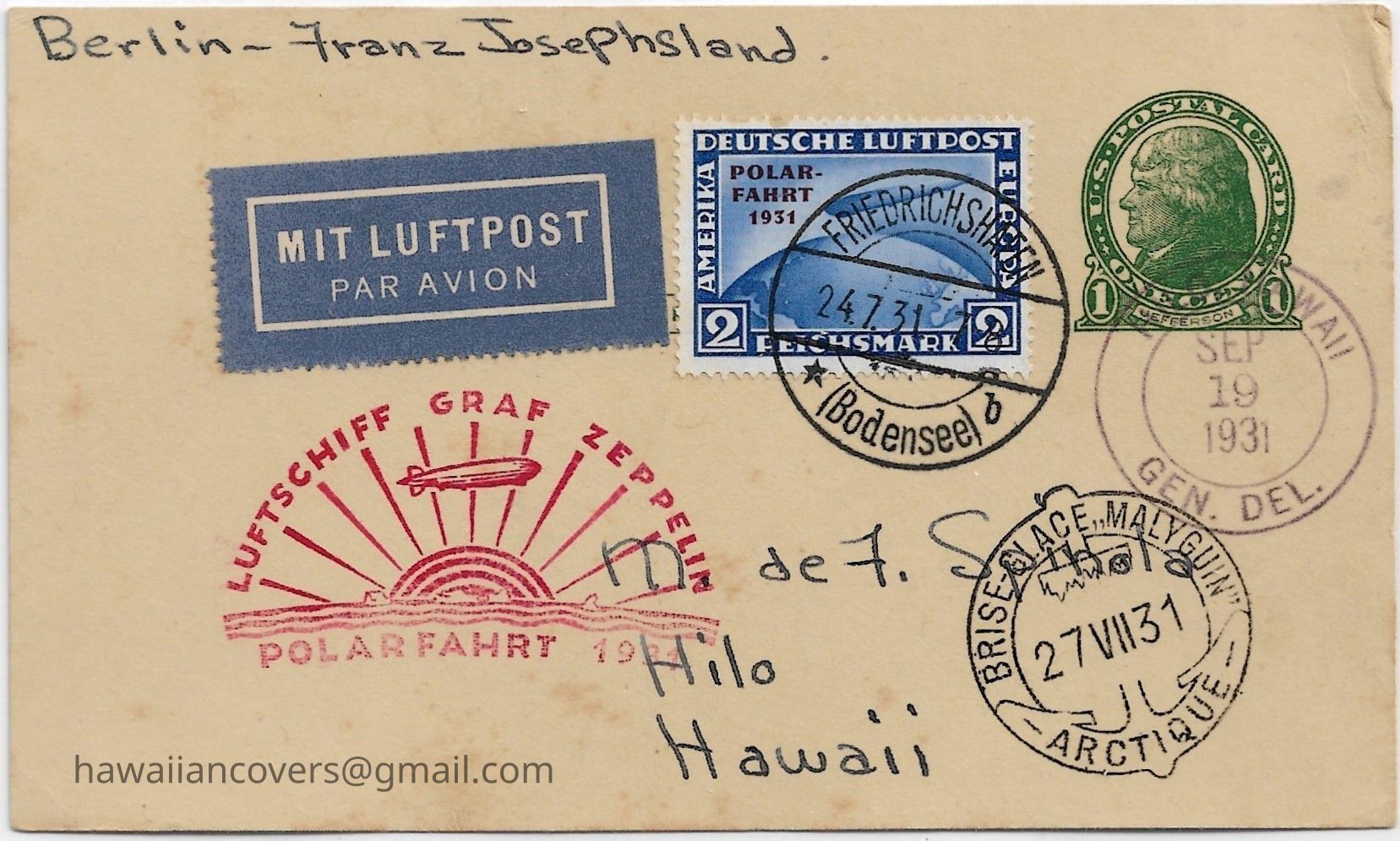Graf Zeppelin’s Arctic Flight, 1931

Author's Personal Collection
931 GRAF-ZEPPELIN POLAR FLIGHT (Frost #127-A), German Polar Flight stamp #C41 on a flight cachet 1¢ USA postal card pays the 2 Mark flight fee + 1¢ printed matter rate to USA, departing FRIEDRICHSHAVEN postmarked on Jul 24, 1931 and dropped to the Russian Icebreaker MALYGUIN in Polar waters and postmarked on Jul 27th, then forwarded to the addressee at Hilo-Hawaii arriving postmarked date Sep 19, 1931, one of the rare flights retailing over $1100 US. As with other Graf Zeppelin flights, the polar expedition was largely financed with revenue from stamp collectors. Graf Zeppelin transferred about 650 pounds of mail to the Malygin, and picked up about 270 pounds of mail from the Soviet ship in return; about 50,000 pieces of philatelic mail (see example) in total were carried on the flight.






